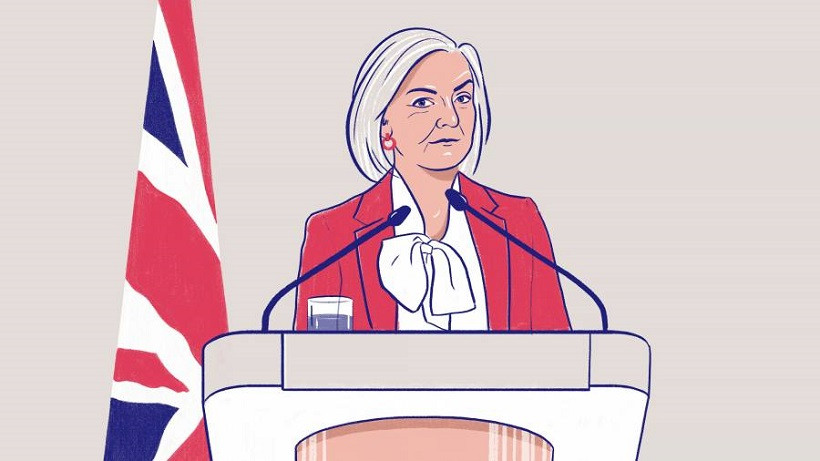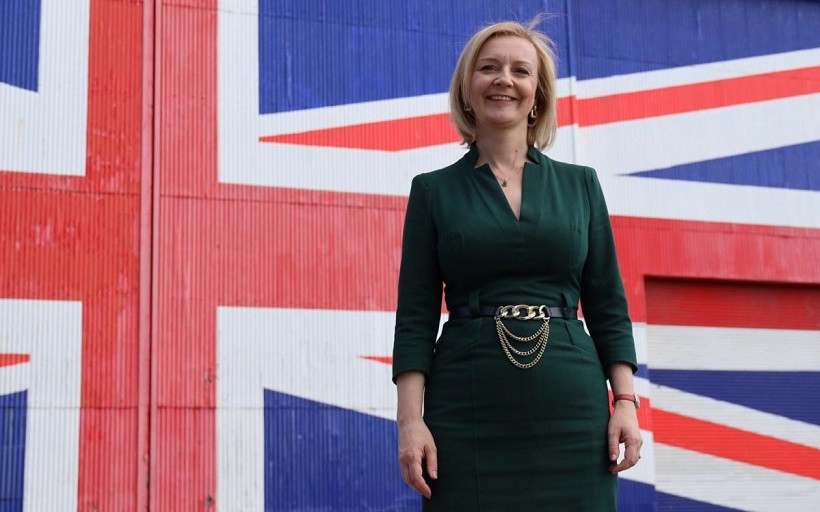
On September 5, on the nearest Monday, a new UK Prime Minister will be introduced to the public. There is a fair chance that outgoing Boris Johnson will be replaced by frontrunner Liz Truss who is currently serving as the Minister of Foreign Affairs. Her only rival is Rishi Sunak, the ex-Chancellor of Exchequer, the outsider in the election race. According to the latest opinion polls, Liz Truss may win almost 70% of votes. In turn, Rishi Sunak could collect a bit more than 30%.

Interestingly, changes in the British government are taking place under the banners of the Conservative party which is still headed by Boris Johnson. Despite this fact, the pound sterling is spooked by the looming victory of Liz Truss in the election. The sterling has been in a downwardspiral across the board mainly due to the political factor.
The thing is the election pledges declared by Liz Truss. The would-be Prime Minister is poised to take drastic measures which are likely to exert strong pressure on the sterling. It is wrong to speak about it hypothetically because the sterling is already behaving as though Liz Truss has already taken office.
What particular measures would be painful to the sterling? First, Liz Truss unveiled her plans for tax cuts and expanding government spending. Some economists are alarmed in advance before the election race is over. In particular, ex-Deputy Governor of the Bank of England Charlie Bean stated his viewpoint. He reckons that some investors already consider sterling-denominated assets as riskier because of signals generated by supporters of the frontrunner for the UK Premier. Liz Truss stated that she is ready to cut the value-added tax by 5 percentage points to 15%. It would be the sharpest-ever decrease in the VAT. According to preliminary estimates, this measure would erase 3.2 billion pounds from the state budget per month or 38 billion annually.
The controversy was targeted by both policymakers and economists, including her rival Rishi Sunak. Earlier, he served as the Chancellor of the Exchequer. From his viewpoint, this measure would represent a tough challenge for the new government as the budget would have to deal with a permanent deficit to make up for lower tax revenues. Above-mentioned ex-Deputy of the Bank of England Governor Charlie Bean, who used to be also a senior economic at the ECB, assessed prospects in his straightforward manner saying that if Liz Truss notches the victory and implements her ambitions, the UK would face a grave and protracted recession.
Mr. Bean and his colleagues are worried not only about the tax reform. It is common knowledge that Liz Truss is also going to revise the Bank of England's mandate. She stated in August that she would consider ways of restricting the central bank's power in making decisions on interest rates. Such statements were followed by comments in the British media. The main argument is that the key to the public attitude to the central bank is trust. For this reason, almost all economists believe that an overhaul in the mandate does not make sense for the time being. Martin Weale, a former Monetary Policy Committee member, said that the active involvement of policymakers in setting interest rates would weaken the sterling's value, especially if you act in parallel with significant expansion of public borrowings. This might unleash a crisis.

Besides, Liz Truss is expected to pursue a tough policy on Brussels in the Brexit context. Some British political scientists believe that she might become the second Iran Lady after Margaret Thatcher.
With such prospects in view, the pound sterling is losing favor with investors. Yesterday, GBP/USD tested 1.14 for the first time since March 2020. Having tumbled to 1.1498, the currency pair reversed sharply 180 degrees. GBP/USD buyers induced a minor correction. Under such a fundamental background, it would be reasonable to use correctional rallies for opening short positions.
As for technical analysis, GBP/USD is locked between the middle and lower lines of the Bollinger bands on the daily chart. The price is also below all lines of the Ishimoku indicator. This technical picture generates a clearly bearish signal. To sum up, all technical signals indicate the overall downtrend. The first and the only downward target is defined at 1.1470 which is the lower border ofthe Bollinger bands on the daily chart.